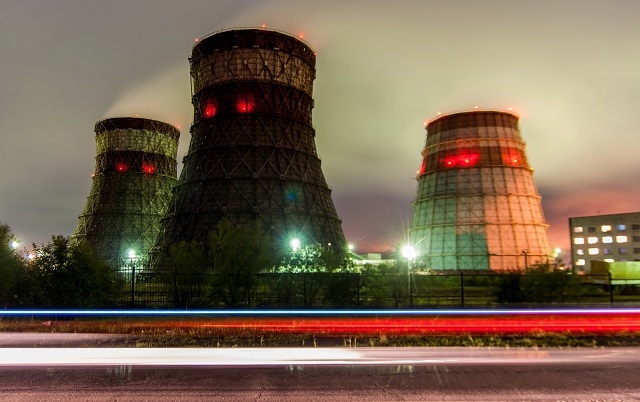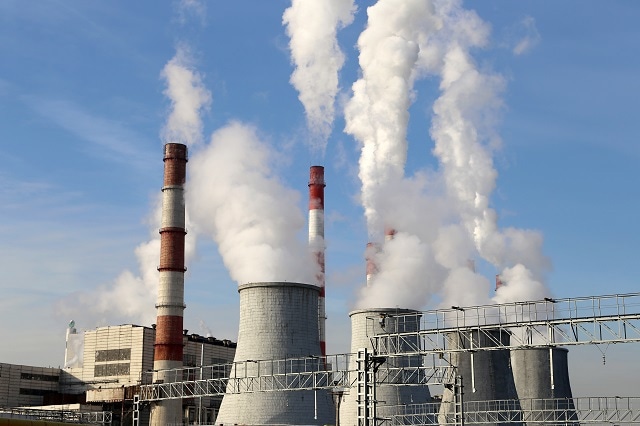The Soviet Union was marked by limited personal freedoms, a lack of personal property, a massive displacement of ethnic populations and military might. After World War II, the Soviet Union used political influence, which was supported by its impressive military, to impose its will over much of Eastern Europe. In the 1980’s, sweeping reforms passed by Mikhail Gorbachev led to the opening up of the Soviet Union and a failed military coup d’état in 1991 led to the country’s collapse, which ultimately formed what is now Russia and 14 other republics.
Environmental Issues of Russia
One of the biggest environmental issues facing Russia is deforestation, which has run rampart due to heavy illegal logging in accessible woodland regions. According to the World Wildlife Fund (WWF), the rates of illegal logging in northwest Russia and in the country’s Far East are at extremely high levels. Heavy logging leads to high levels of erosion and greater carbon dioxide levels. Additionally, the WWF also noted that illegal logging negatively impacts numerous species in the boreal forests. According to the Center for Russian Environmental Policy, Russia loses approximately 16 million hectares of forest each year. Despite these growing deforestation rates, the Russian government has not made any apparent efforts to implement robust forest policies, nor implement any conservation or reforestation projects that could potentially protect the vast forests of this country.
Since a staggering 19% of the world’s forest reserves are located in Russia, the deforestation in this country alone accounts for anywhere between 300 to 600 million tons of the 1.5 billion tons of carbon dioxide (CO2) that are sequestered each year as a result of global deforestation. Unfortunately, during the 2015 Paris Agreement, little focus was made on Russia’s role in degrading the environment as a result of their astonishing deforestation rates3.

Cooling towers cogeneration - Khabarovsk, Russia. Image Credits: ANNI-SANNI/shutterstock.com
Between Russia’s historical nuclear weapons program and nuclear energy sector, nuclear contamination of the countryside is another major environmental concern for the country. Many of Russia’s first generation nuclear reactors are at the end of their life span, therefore, continued operation of this reactors only increases the already present risks for disaster at these locations. Additionally, Russia’s nuclear weapons program has resulted in permanent damage in southern Siberia, and near Chelyabinsk in the Ural Mountains. In late September of 2017, French and German officials identified a spike in ruthenium 106 concentrations, a radioactive isotope, which were 986 times higher than a month earlier, that Russia, at the time, denied having any contributing role to this spike. Although law officials of Russia claim that these levels cannot cause harm to human health, there is a relative distrust that Russians in regards to nuclear contamination events as a result of the tragic accidents that took place in 1957, as well as following Chernobyl in Ukraine in 19865.
Significant neglect during the Soviet Union area has also led to degradation in the quality of Russian land and water. In particular, lands in the industrial belt along the southern section of the Ural Mountains have been degraded beyond repair.
Despite being a country that is rich in water supplies, with 2 million lakes, 210,000 rivers and approximately 25% of the earth’s total freshwater reserves, Russia continues to face difficulties in maintaining the cleanliness in their water supplies. Hydroelectric dams on the Volga River have decreased the river’s volume of water, causing it and other rivers to retain even more of the pollutants than they normally would have. Additionally, water contamination in the country’s capital of Moscow has also become increasingly concerning, especially following a recent report conducted by Greenpeace that found mercury levels within the Moskva to be 20 times higher than the minimum accepted levels, whereas manganese levels were up to 120 times higher7. As urbanization of Moscow is continued to rise, water demands will also rise, thereby posing a risk of increasing human exposure to these toxic substances through the water supply.
Environmental Policies of Russia
Russian environmental policy has evolved significantly since the neglectful days of the Soviet Union. Despite these improvements, critics have pointed out that the enforcement of these laws is somewhat lax. Critics of Russian environmental policy also point to a dismantling of the country’s environmental agencies. For example, the State Committee for ecological matters (Goskomekologiya) was eliminated in 2000 and its duties were transferred to the Ministry of Natural Resources, an agency focused on developing natural resources.
In addition to an apparent decline in governmental policy, conservation organizations like WWF Russia and Greenpeace Russia have noted that they feel they have a lack of support from the Kremlin. Some domestic conservation organizations have a closer relationship with the government and as a result, critics say, these groups tend to be less critical of Russian policy. These organizations tend to focus on small regional issues.

Coal burning power plant with smoke stacks, Moscow, Russia. Image Credits: VLADJ55/shutterstock.com
Recently, the Russian government has been signaling that it will be updating its environmental policy for the 21st century. In November 2013, Russian President Vladimir Putin said environmental conditions in 15 percent of the country is unsatisfactory and added that Russia must change its environmental policies or else be “left with nothing” despite having vast territories and quantities of resources.
The adverse effects associated with climate change in Russia have been predicted to cause economic damage that can reach up to $4.3 billion each year by 2025, thereby increasing the push to encourage government officials to address concerns on patterns that are contributing to climate change in this country. Recently, an adaptation plan was presented for Moscow to address some of the major issues associated with climate change in Russia. For example, the rise in sweltering temperatures contributed to an increase in forest fires and smog that have caused approximately 11,000 deaths in only 44 days during the summer of 2010. Therefore, the adaptation plan incorporates the modernization of hospitals to better cope with heat waves, particularly for the elderly populations in hospitals, as well as establish free water supplies that will allow senior centers and elementary schools to have improved access to air conditioning during these extreme heat events8.
Clean Technology in Russia
In 2012, Russia was ranked dead last out of 38 developed countries by the Global Cleantech Innovation Index for clean tech start-up companies. The ranking was based on several factors including business culture and government support. As one of the top fossil fuel producers in the world, Russia has not had much of an incentive to adopt clean technology; however, the country has recently started to make incremental, yet substantial investments.
In 2013, the Russian republic of Tatarstan announced the development of a €100 million fund to invest in biofuels and electric car batteries. The fund is said to mete out funds in increments of €5 to €25 million for various clean technology projects.
Currently, only 3.6% of Russia’s total energy consumption is attained by renewable energy sources, which is comparable to approximately the United States that utilizes about 10% of renewable energy sources to meet its energy demands. According to a recent International Renewable Energy Agency (IRENA) report, the Russian Federation’s current plants will allow the country’s renewable energy usage to increase to 5% by 2030; however, a steadfast increase in green technology development in Russia could increase this number to as high as 11.3% by the same year9. Although this endeavor will cost the country about $15 billion to achieve, recent remarks by Putin appear to support the notion that this change in heart is in the foreseeable future for Russia.
A Clean Future for Russia?
Putin's comments about upgrading the country’s environmental policies should be seen as a sign that Russia will be embracing clean technology more than it has in the past. How much Russia embraces clean technology will likely be a function of oil prices and international politics. Other countries are moving slowly away from the mass consumption of fossil fuels, therefore, Russia will be forced to embrace this movement or risk being left out in the cold.
Sources and Further Reading
This article was updated on the 24th July, 2018.
Disclaimer: The views expressed here are those of the author expressed in their private capacity and do not necessarily represent the views of AZoM.com Limited T/A AZoNetwork the owner and operator of this website. This disclaimer forms part of the Terms and conditions of use of this website.